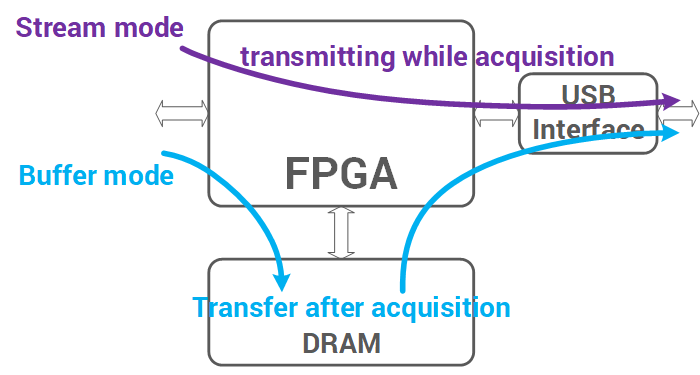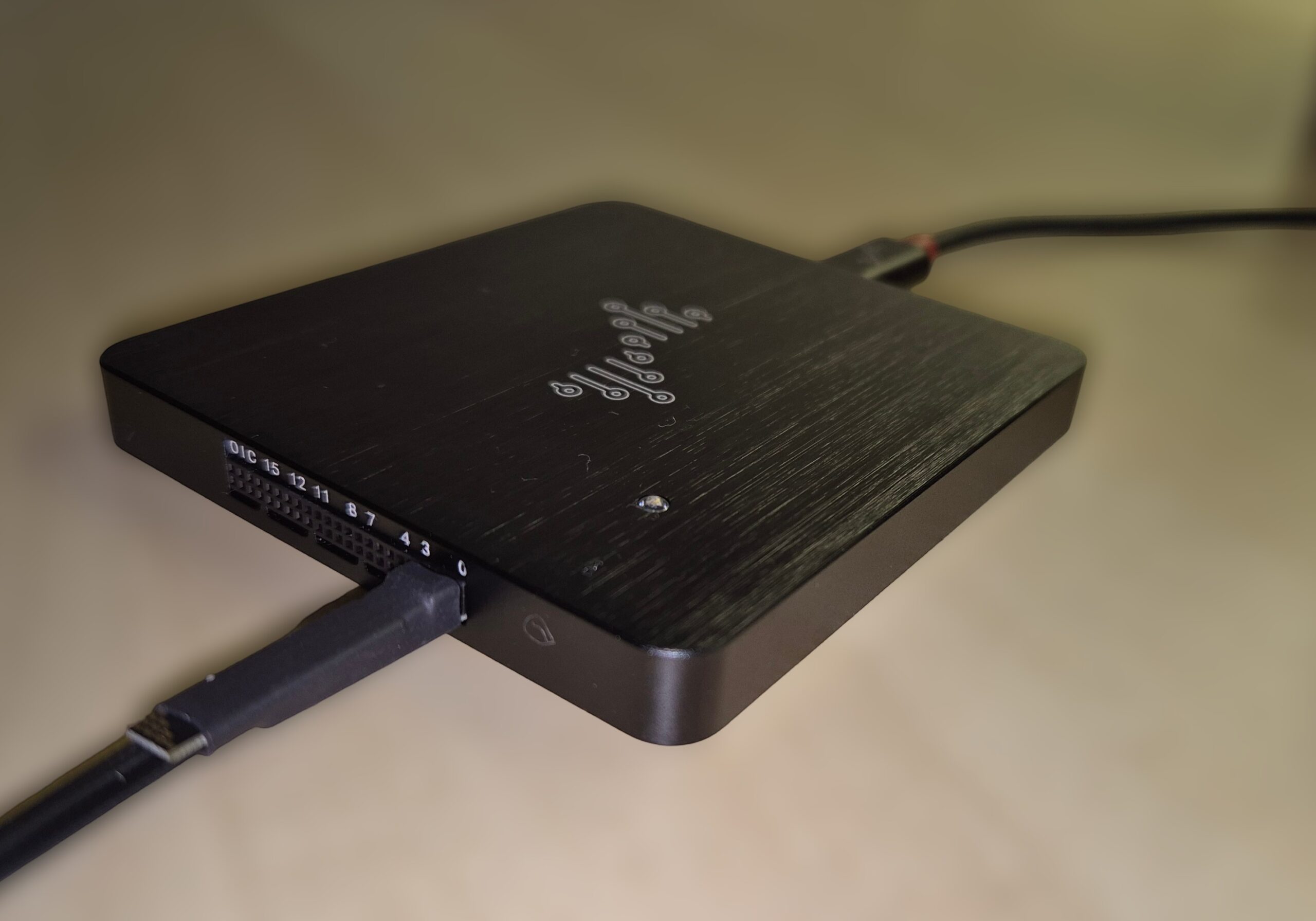INTRODUCTION
Logic analyzers are a basic tool in any electronics lab. They serve many purposes: from debugging errors, measuring timing between different processes, checking and sniffing communications and even identifying signals on a PCB.
Throughout my career I’ve worked with different types of logic analyzers: from high-end devices like Saleae, to very cheap ones that cost around €10–15.
My recommendation here is to always avoid those very low cost analyzers. When you’re trying to debug one of those annoying bugs that can take you more than a day to find, the last thing you need is to doubt whether your logic analyzer is working properly.
On the other hand, analyzers like Saleae work flawlessly. Their hardware, probes, and software are excellent, but I think they’ve become too expensive for a lab tool meant for small experimental work. In recent years, their price has almost doubled, which feels exaggerated for a product that’s already established. It’s understandable that prices go up slightly because of the general increase in component costs, but for a device whose hardware hasn’t really been updated, I don’t think doubling the price is justifiable.
That’s why, when I decided to buy one, I started looking for a more affordable alternative. That’s when I discovered the logic analyzers from DreamSourceLab. At first glance, with their CNC black aluminum case and impressive specs, they seemed to be a very high quality product.
DREAMSOURCELAB INFO
Diggin around, I found out that DreamSourceLab started more than ten years ago through a Kickstarter campaign. Since those first prototypes (they now have several different products), their design has evolved and there are now several models available on their website.
They also now providing a PC software called DSView, which is open-source, quite powerful, easy to set up, and which includes protocol decoders.
When I was looking to buy one a few months ago, I noticed there were several models already on the market. It took me a while to figure them out, I even came across one that wasn’t listed on their official site. Fake in the market? I thought. I wrote to their support email and they quickly replied, confirming that it was an official version released mainly for the Chinese market, not yet listed on their website but officially sold through their AliExpress distributor (you’ll find the links below), and available for purchase in Europe as well. I imagine that’s also the case for other regions.
SELECTION GUIDE
Looking into the product description, I found the following comparison table, which helped me perfectly understand the differences between the available models. I didn’t find this table on their official site, but it’s the clearest way to compare their devices at a glance.
| Feature | DSLogic U2Basic | DSLogic Plus | DSLogic U2Pro16 | DSLogic U3Pro16 | DSLogic U3Pro32 |
|---|---|---|---|---|---|
| USB transfer rate | USB2.0 (480Mbps) | USB2.0 (480Mbps) | USB2.0 (480Mbps) | USB3.0 (5 Gbps) | USB3.0 (5 Gbps) |
| Supported modes | Buffer & Stream | Buffer & Stream | Buffer & Stream | Buffer & Stream | Buffer & Stream |
| Max sampling rate (Buffer Mode) | 100MHz (16ch) | 400MHz (4ch) 200MHz (8ch) 100MHz (16ch) | 1GHz (8ch) 500MHz (16ch) | 1GHz (8ch) 500MHz (16ch) | 1GHz (8ch) 500MHz (16ch) 250MHz (32ch) |
| Max sampling rate (Stream Mode) | 100MHz (3ch) 50MHz (6ch) 25MHz (12ch) 20MHz (16ch) | 100MHz (3ch) 50MHz (6ch) 25MHz (12ch) 20MHz (16ch) | 100MHz (3ch) 50MHz (6ch) 25MHz (12ch) 20MHz (16ch) | 1GHz (3ch) 500MHz (6ch) 250MHz (12ch) 125MHz (16ch) | 1GHz (3ch) 500MHz (6ch) 250MHz (12ch) 100MHz (30ch) 50MHz (32ch) |
| Min collected pulse width | 20ns | 5ns | 2ns | 2ns | 2ns |
| Max acquisition signal | 25MHz | 100MHz | 250MHz | 250MHz | 250MHz |
| Max acquisition depth | Buffer: 64M Stream: 16G | Buffer: 256M Stream: 16G | Buffer: 4G Stream: 16G | Buffer: 2G Stream: 16s | Buffer: 2G Stream: 16s |
| Hardware memory | 64Mbit | 256Mbit | 4Gbit | 2Gbit | 2Gbit |
| Triggering | Simple trigger | Simple + Level16 + Protocol trigger | Simple + Level16 + Protocol trigger | Simple + Level16 + Protocol trigger | Simple + Level16 + Protocol trigger |
| Voltage range | 0–5V adj. (0.1V step) | 0–5V adj. (0.1V step) | 0–5V adj. (0.1V step) | 0–5V adj. (0.1V step) | 0–5V adj. (0.1V step) |
| Input impedance | 250KΩ // –20pF | 250KΩ // –20pF | 250KΩ // –13pF | 250KΩ // –13pF | 250KΩ // –13pF |
| State sampling | Max. 30MHz | Max. 50MHz | Max. 50MHz | Max. 50MHz | Max. 50MHz |
| External interface | Ordinary dupont line | Shielded line (per channel ground) | Shielded line (per channel ground) | Shielded line (per channel ground) | Shielded line (per channel ground) |
Among the most relevant aspects shown in the table, there are several points worth understanding:
- The difference between Stream and Buffer modes.
Stream mode allows you to view the captured data in real time through the software, as the FPGA sends it directly over the USB interface.
In Buffer mode, you have to finish the capture first before seeing the data, because it’s stored in DRAM and then sent via USB.
Personally, from a practical point of view, Stream mode is much more convenient, although its sampling rate is more limited.

source: www.dreamsourcelab.com
- Sampling rate.
This defines how many samples per second are taken on each channel. The higher it is, the better you can see the signals without losing detail. Keep in mind that it varies between Stream and Buffer modes. In the table you can see sample rates specified as 50 MHz (6ch), which indicate that if you have six or fewer active channels, you will be able to sample at a rate of 50 MHz.
- Number of channels.
Most models have 16 channels, except for the DSLogic U3Pro32. In my experience, I’ve never really needed to use all 16 channels simultaneously, though I understand some users might.
When comparing the DSLogic U3Pro16/32 with the DSLogic U2Pro16, the main performance difference lies in Stream mode: you can only sample up to 100 MHz when using three channels, whereas with just three channels in Buffer mode you can reach up to 1 GHz. Moreover, in Buffer mode you can still sample at 1 GHz with eight active channels. In general, the more channels you have active, the lower the maximum sample rate will be.
CONCLUSION
In my case, I chose the DSLogic U2Pro16, since it was enough for my needs when working at home: debugging, identifying signals, and working with protocols like UART, SPI, or I²C. It can also sample at much higher rates in Buffer mode when needed. Plus, the price was about half that of the DSLogic U3Pro16.
I don’t think the model I bought is much worse, but it offered the best balance of quality and price for my use case.The key is to think about what kind of signals you’ll need to capture in your daily work, and plan ahead. Don’t pick something just barely sufficient, or you’ll need another one sooner than expected.
I’ve used quite a few Saleae analyzers, one of the most reputable brands in this space, and I believe DreamSourceLab devices are, objectively speaking (based on their specs), superior in performance while being much cheaper. Of course, there are other factors to consider: hardware quality of the unir and probes, the software performance, etc. But DreamSourceLab scores very high in both aspects too.
In a future post, I’ll do an in-depth review of my DSLogic U2Pro16, taking a look inside, testing the probes, and reviewing the software.
I hope you enjoyed this general analysis. Let me know what you think in the comments.
Useful links:

